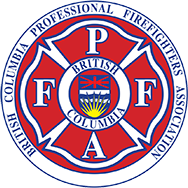Address Cancers, Heart Disease And Heart Injury Presumption For Fire Fighters
The Physician’s letter is to assist you as the attending physician of a fire fighter in British Columbia, and to provide information on the particular aspects of the occupational connection associated with fire fighting, heart injury/disease and certain cancers.
January is Fire Fighters’ Cancer Awareness Month
Providing fire fighters the necessary tools and guidance to develop life-saving protocols for cancer prevention and to support those with a cancer diagnosis within their departments.
Decontamination
Firefighters at the scene of every fire should have gross decontamination done immediately after leaving IDLH environments. Not having adequate decontamination puts you and everyone at risk of carcinogen exposures.
Turnout Gear Decontamination Process
When it comes to creating a decontamination laundry area at a firehouse, it's essential to know the basics and to plan ahead.
Hierarchy of contamination control in the fire service: Review of exposure control options to reduce cancer risk
Gavin P. Horn, Kenneth W. Fent, Steve Kerber & Denise L. Smith
Review of exposure control options to reduce cancer risk, Journal of Occupational and Environmental Hygiene
Firefighting poses acute occupational hazards and is associated with long-term health risks including cancer. A number of epidemiology studies have been conducted to determine the risk of cancer in the fire service, and several meta-analyses have been conducted on these studies (Table 1; LeMasters et al. 2006; Jalilian et al. 2019; Soteriades et al. 2019; Casjens et al. 2020; Laroche and L'Esperance 2021). National Institute for Occupational Safety and Health (NIOSH) conducted one of the largest cohort mortality studies on firefighters in the United States and found statistically significant increases in mortality and incidence rate estimates for firefighters compared with the general population (Daniels et al. 2014; Pinkerton et al. 2020). Researchers also found evidence of exposure-response relationships for lung cancer and leukemia among firefighters (Daniels et al. 2015; Glass et al. 2016).
For more information on Healthy In, Healthy out, please contact Bob Dirham: hiho@wscff.org
Healthy In, Healthy Out
Best Practices
The goal of the Healthy In, Healthy Out materials is to encourage safe and healthy practices from a fire fighter’s first day to retirement. A career in the fire service exposes fire fighters to deadly carcinogens at every fire. This manual, and the Healthy In, Healthy Out video identify best practices that reduce the risk of exposure to carcinogens. For more information on Healthy In, Healthy out, please contact Bob Dirham: hiho@wscff.org







